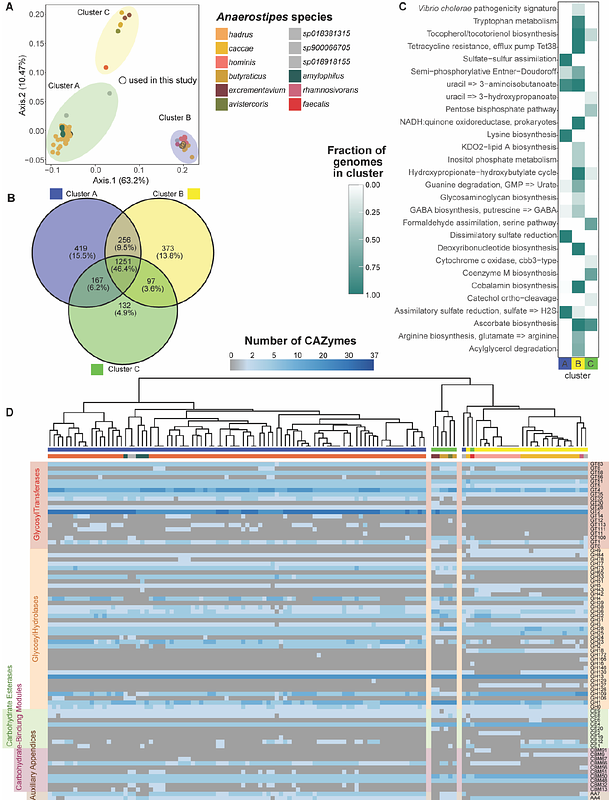Diversity and prevalence of Anaerostipes in the human gut microbiota

Diversity and prevalence of Anaerostipes in the human gut microbiota
Bhattacharjee, D.; Millman, L. C.; Seesengood, M. L.; Seekatz, A. M.
AbstractMembers of the class Clostridia, a polyphyletic group of Gram-positive, spore-forming anaerobes in the Bacillota (Firmicutes) phylum, are prevalent and commonly associated with beneficial functions, such as providing colonization resistance against pathogens. Despite a demonstrated value in maintaining Clostridial populations in the gut, the functional and strain diversity of most commensal Clostridial species remains understudied. Here, we isolated and characterized Clostridial isolates, focusing on the genomic diversity of Anaerostipes, a prevalent butyrate-producing genus within the gut microbiota. We conducted a genomic comparison across 21 Anaerostipes strains isolated from healthy human fecal samples (n = 5) and publicly available genomes (n = 105). Whole genome comparisons across the Anaerostipes genus demonstrated 12 species bins, clustering into three major functionally distinct clusters correlating with host origin. One cluster (representing mostly A. caccae genomes) was distinguished by possessing a complete vitamin B12 biosynthesis pathway. Variability in carbohydrate and amino acid metabolism was demonstrated within dominant species of the human microbiota (A. hadrus, A. caccae, and A. hominis). Collectively, these data indicate metabolic variance across Anaerostipes species that may influence coexistence within the gut environment and variably influence health.